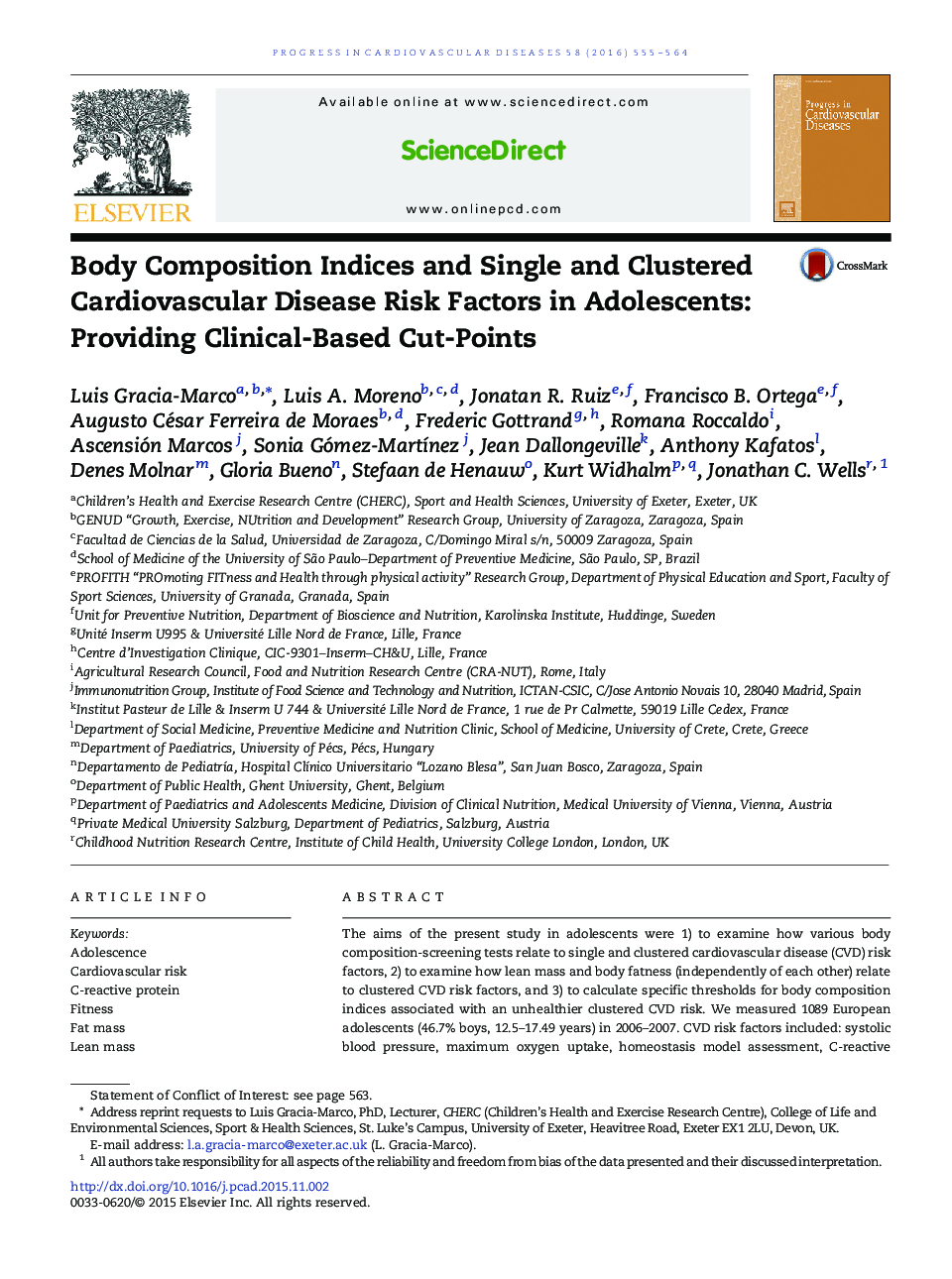| کد مقاله | کد نشریه | سال انتشار | مقاله انگلیسی | نسخه تمام متن |
|---|---|---|---|---|
| 3006215 | 1180969 | 2016 | 10 صفحه PDF | دانلود رایگان |
The aims of the present study in adolescents were 1) to examine how various body composition-screening tests relate to single and clustered cardiovascular disease (CVD) risk factors, 2) to examine how lean mass and body fatness (independently of each other) relate to clustered CVD risk factors, and 3) to calculate specific thresholds for body composition indices associated with an unhealthier clustered CVD risk. We measured 1089 European adolescents (46.7% boys, 12.5–17.49 years) in 2006–2007. CVD risk factors included: systolic blood pressure, maximum oxygen uptake, homeostasis model assessment, C-reactive protein (n = 748), total cholesterol/high density lipoprotein cholesterol and triglycerides. Body composition indices included: height, body mass index (BMI), lean mass, the sum of four skinfolds, central/peripheral skinfolds, waist circumference (WC), waist-to-height ratio (WHtR) and waist-to-hip ratio (WHR). Most body composition indices are associated with single CVD risk factors. The sum of four skinfolds, WHtR, BMI, WC and lean mass are strong and positively associated with clustered CVD risk. Interestingly, lean mass is positively associated with clustered CVD risk independently of body fatness in girls. Moderate and highly accurate thresholds for the sum of four skinfolds, WHtR, BMI, WC and lean mass are associated with an unhealthier clustered CVD risk (all AUC > 0.773). In conclusion, our results support an association between most of the assessed body composition indices and single and clustered CVD risk factors. In addition, lean mass (independent of body fatness) is positively associated with clustered CVD risk in girls, which is a novel finding that helps to understand why an index such as BMI is a good index of CVD risk but a bad index of adiposity. Moderate to highly accurate thresholds for body composition indices associated with a healthier clustered CVD risk were found. Further studies with a longitudinal design are needed to confirm these findings.
Journal: Progress in Cardiovascular Diseases - Volume 58, Issue 5, March–April 2016, Pages 555–564
